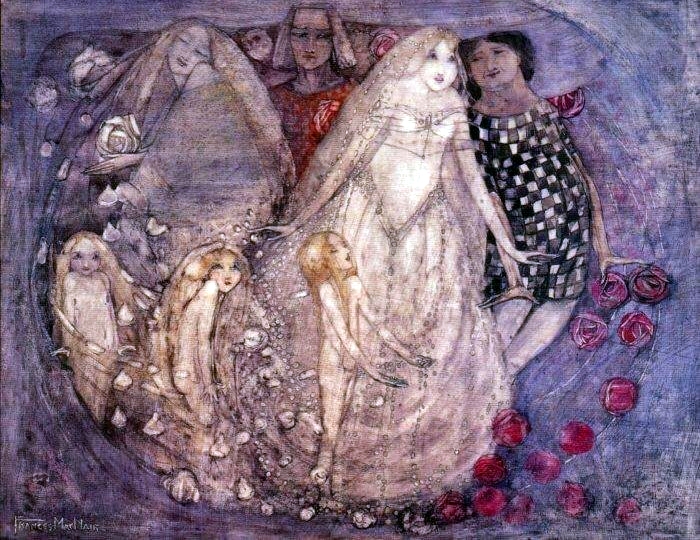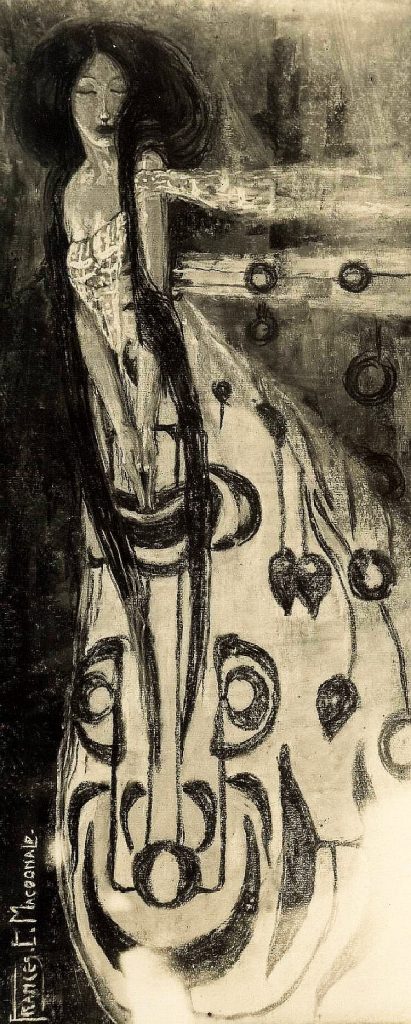
Frances MacDonald (1873-1921) was a Scottish artist known for her involvement in the Arts and Crafts movement and her contributions to the Glasgow School of Art. She was part of a talented artistic family, which included her siblings Margaret Macdonald Mackintosh and James Herbert McNair, who were also prominent figures in the Glasgow School.
Here are some key points about Frances MacDonald:
- Early Life and Education: Frances MacDonald was born in England but grew up in Glasgow, Scotland. She and her siblings received their early artistic training at the Glasgow School of Art, which was a hub of creativity and innovation during the late 19th and early 20th centuries.
- Arts and Crafts Movement: MacDonald was a significant figure in the Arts and Crafts movement, which aimed to revive traditional craftsmanship and promote the integration of art into everyday life. The movement emphasized the importance of handmade objects and rejected mass production. Frances MacDonald’s work often reflected these principles.
- Collaboration with Margaret Macdonald Mackintosh: Frances MacDonald frequently collaborated with her sister, Margaret Macdonald Mackintosh, on various art and design projects. Together, they created highly stylized and decorative works that were often characterized by intricate floral motifs, symbolism, and a strong emphasis on the feminine.
- Design and Applied Arts: MacDonald and her sister worked in a variety of mediums, including textiles, metalwork, and interior design. They were known for their contributions to the Glasgow Four, a group of artists and designers that also included Charles Rennie Mackintosh and James Herbert McNair. Their designs often featured bold, flowing lines and intricate details, reflecting the influence of Art Nouveau.

- Exhibitions and Recognition: Frances MacDonald exhibited her work at various art exhibitions in Scotland and England. Her artistic contributions were recognized and celebrated within the Glasgow School and the broader Arts and Crafts movement.
- Later Life: After her marriage to artist Herbert MacNair, Frances MacDonald moved to Liverpool, England. While her artistic output decreased during her later years, her earlier works continued to be appreciated for their creativity and distinctive style.
Frances MacDonald’s work, often produced in collaboration with her sister and peers, remains highly regarded for its intricate and decorative qualities. Her contributions to the Arts and Crafts movement and the Glasgow School of Art played a significant role in shaping the artistic landscape of her time, and her legacy endures as part of the broader history of decorative arts and design in the early 20th century.




